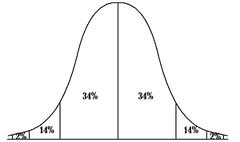Normality Test Calculator – Anderson Darling
Instructions: Using this Normality Test Calculator to enter the sample data in the form below, and this calculator will conduct a normality test (Anderson-Darling) to assess whether or not the sample data provided departs significantly from normality
Normality Test Calculator
A normality test is a statistical hypothesis test that assess whether or not a sample of data departs significantly from normality or not. For a given sample \(X_i\), the purpose of the test is to assess whether the data depart significantly from normality or not.
This normality test will test the following null and alternative hypothesis:
\(H_0: \) The sample data comes from a normally distributed population
\(H_A: \) The sample data does not come from a normally distributed population
In order to conduct the Anderson-Darling (AD) test, the following test statistic is computed:
\[ A^2 = -n - \frac{1}{n}\sum_{i=1}^{n}\left((2i-1)\ln\Phi(Z_i) + (2(n-i)+1)\ln(1- \Phi(Z_i))\right) \left(1 + \frac{0.75}{n} - \frac{2.25}{n^2} \right)\]There are other normality tests you may be interested in taking a look, such as the Shapiro-Wilk and the Kolmogorov-Smirnov normality test.
If you need assess the properties of the distribution of \(X_i\), you can use our box plot chart maker and our histogram maker .

